What is Valuation Class?
SAP Valuation classes are used to assign different valuation methods to different material types or groups of materials. A valuation class determines how the system values materials during inventory management and accounting processes.
How Does Valuation Class Work in SAP?
Here's how valuation classes work in SAP:
-
Definition: A valuation class represents a grouping of materials that have similar characteristics for valuation purposes. It is a key organizational element that helps in defining the rules for valuing materials in SAP.
-
Material Master: Each material in SAP is assigned to a valuation class in its material master record. The valuation class determines which valuation method and account determination will be used for the material.
-
Valuation Methods: SAP provides various valuation methods, such as standard price, moving average price, and FIFO (First-In, First-Out). The valuation class determines which valuation method will be used for materials assigned to that class.
-
Account Determination: Valuation classes are also used to determine the general ledger (GL) accounts for inventory postings. Different valuation classes can be mapped to different GL accounts based on the material valuation method.
-
Configuring Valuation Classes: Valuation classes are configured in SAP through the customizing settings. The configuration involves defining the valuation classes, assigning valuation methods to each class, and specifying the GL accounts for inventory postings.
-
Use in Transactions: Valuation classes come into play during various inventory management and accounting transactions. For example, when goods are received or issued, the valuation class determines how the material's value is updated. Similarly, during goods movements, inventory valuation is based on the valuation class and assigned valuation method.
Use Valuation Classes
Valuation classes in SAP are primarily used for the following purposes:
-
Material Valuation: Valuation classes determine the valuation method used for material. For example, you can assign a valuation class to a material that uses the standard price valuation method, while another valuation class may use the moving average price method. This allows for different materials to be valued differently based on their characteristics.
-
Account Determination: Valuation classes play a crucial role in determining the general ledger (GL) accounts used for inventory postings. When goods are received or issued, the valuation class associated with the material determines the GL accounts to which the value of the inventory is posted.
-
Price Control: Valuation classes help control how prices are updated for materials. For materials with a moving average price, the valuation class determines whether the price is updated after each goods receipt or based on periodic price calculations. For materials with a standard price, the valuation class specifies a fixed price for the material.
-
Reporting and Analysis: Valuation classes provide a way to group materials with similar valuation characteristics. This grouping can be helpful in reporting and analyzing inventory values, costs, and variances. You can generate reports and perform analysis based on valuation classes to gain insights into inventory valuation and profitability.
-
Material Type or Group Specifics: Valuation classes can be assigned to specific material types or groups to ensure consistent valuation across similar materials. For example, you can assign a valuation class to a group of raw materials, finished goods, or spare parts to maintain consistent valuation methods and GL accounts within each group.
How to link Valuation Class with a GL account?
Please follow the steps below to link the valuation class with the gl account:
- Execute transaction code OB41 in the SAP Command field
- Next, select the Valuation Class that you want to link with a GL account.
- Now click on the Account Assignment button.
- Select the G/L Account option
- Next, click on the New Entries button.
- Now enter the company code, chart of accounts, and GL account number that you want to link with the Valuation Class.
- Click on the Save button to save your changes.
How to Define Valuation Class?
Please follow the steps below to define the valuation class:
Execute transaction code OMSK in the SAP Command field
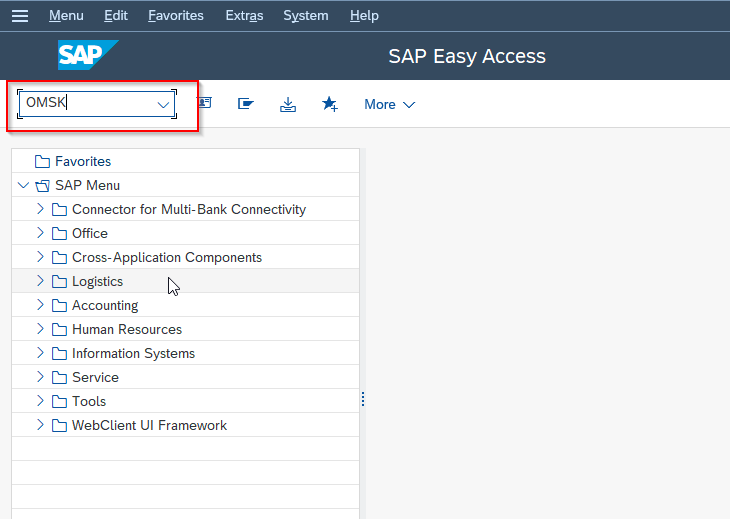
On the next screen click on the Valuation Class option
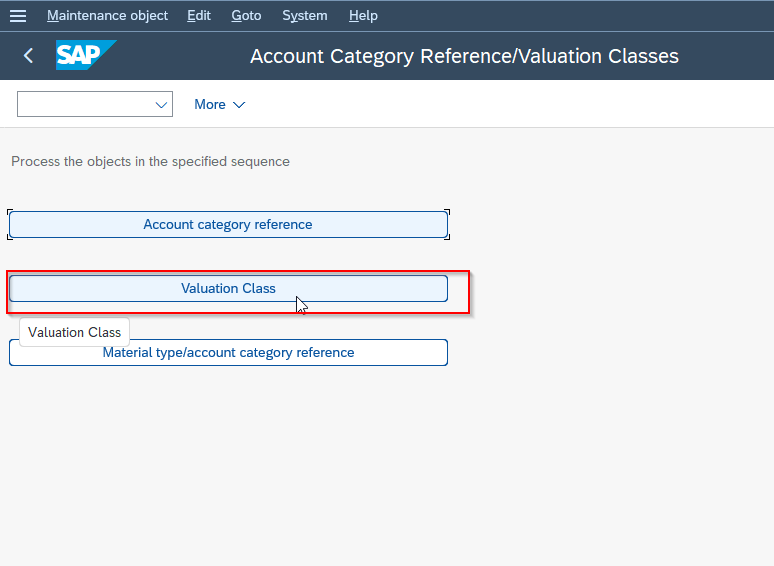
Next on Change View "Valuation Classes": Overview screen you will see the list of previously defined valuation classes.
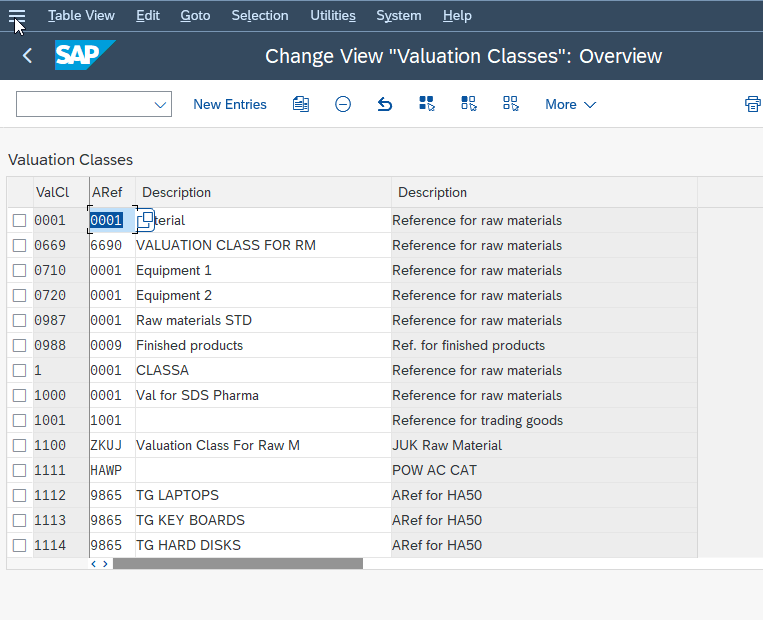
Click on the New Entries button to create a new valuation class.
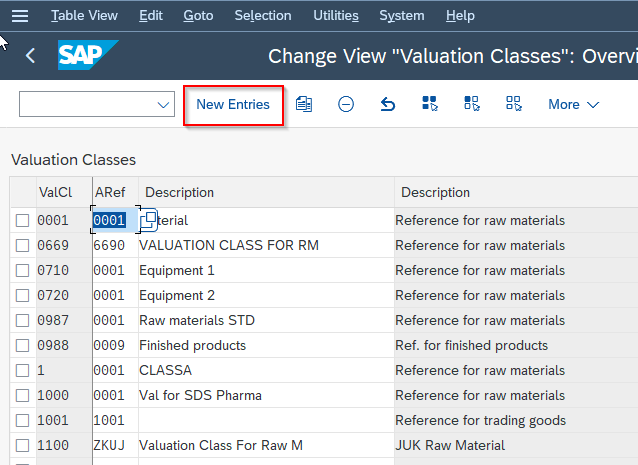
Next, enter all the details for the new valuation classes as shown in the image below:
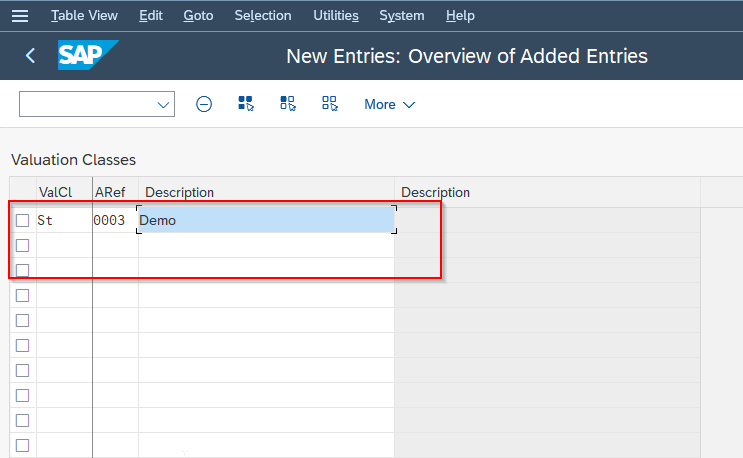
Now click the Save button to save the new details
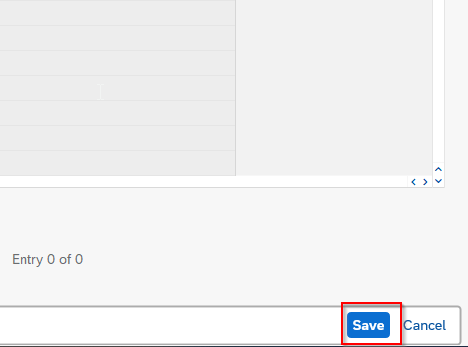
Now choose your Customization request number and press Enter button to proceed.
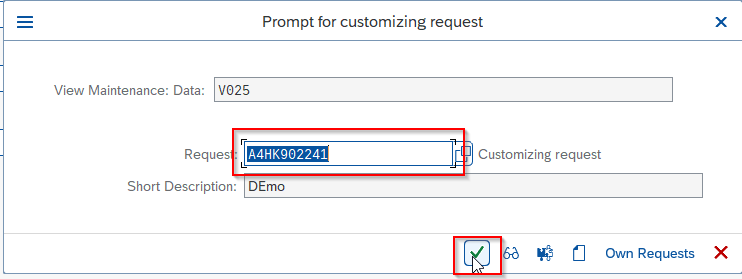
A message Data was saved will be displayed on your screen meaning all the configurations have been saved.
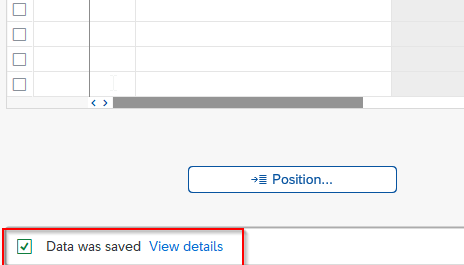
Next, go back and click the Material Type/Account Category Reference option.
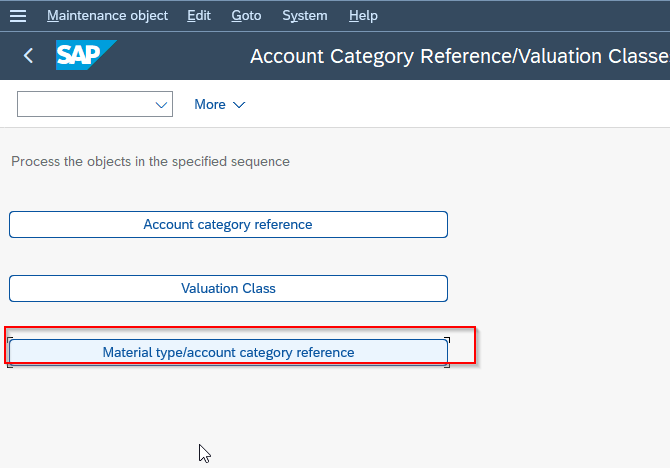
Here the user map material type with ARef (Account reference). G/L accounts can now be posted for different material types.
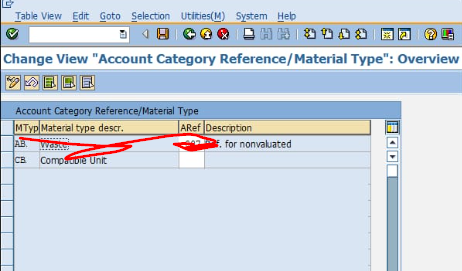
You group together different materials with similar properties into valuation classes so that you do not have to manage a separate stock account for every material.
The following table contains examples of possible valuation classes:
Which valuation class a material can be assigned to depends on the material type. You can define the following assignments in Customizing:
A material is assigned to a valuation class in the material master record. The system checks whether the material type allows the material to be assigned to the valuation class specified.
The system refers to the valuation class of a material to determine which stock account to post to when a posting is made for this material.